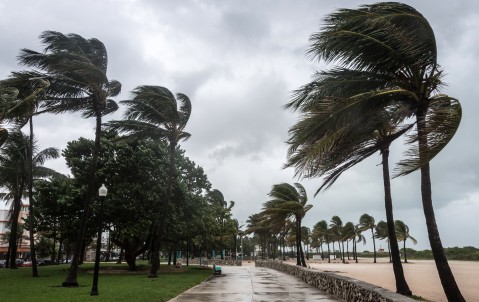
Stalling storms bring new US flood risk
More hurricanes are heading inland, moving slower and leaving more rainfall on properties unused to flooding
Evidence of more frequent hurricanes stalling over land and leaving higher rainfall in areas of the US that were previously less prone to flooding, means there needs to be a rethink for many US homeowners when it comes to protecting their homes against flood damage. 2017’s Hurricane Harvey, for example, caused more insured flood related losses in X Zone areas – where the risk of flooding is historically considered to be minimal – than it did in other more ‘at risk’ zones. While 2021’s Hurricane Ida produced extreme rainfall of over 10 inches in parts of the north east, causing flash floods and urban flooding.
“With 2022 expected to be an ‘above average’ storm season with 19 named storms,” said Tom King, Hiscox London Market’s Flood Underwriter, “many more homeowners should be considering purchasing flood cover for the first time and for those who already have cover, need to ensure they have the breadth and depth needed to fully protect their homes.”
Hurricanes hanging around
According to Colorado State University research, 2021’s Atlantic storm season – with eight continental US named storms and two making landfall – was 120% of the average season. The expectation for 2022 is higher at “130% of the average season from 1991-2020”, with nine hurricanes and four of those to “reach major hurricane strength”. And while that frequency of storms is in itself a worry for homeowners in hurricane exposed areas, it’s the changing nature of the storms that’s introducing an additional peril. “The growing evidence, certainly from hurricanes Ida, Harvey and Dorian, seems to be pointing towards warmer seas fuelling more frequent and more powerful storms, which are moving further in land, moving slower and increasing the levels of rainfall,” said Jon Cavanagh – Lead Pricing Analyst for Hiscox London Market.
A study released by scientists from NASA and NOAA revealed that the average forward speed for hurricanes has “decreased by 17 percent—from 11.5 mph, to 9.6 mph” between 1944 and 2017. “The scientific consensus on why they’re stalling isn’t there yet,” added Cavanagh, “but the thinking is that climate change is affecting the higher latitudes to a greater extent than the lower latitudes, which leads to a decrease in the atmospheric circulation that normally drives the storms forward.”
“The growing evidence, certainly from hurricanes Ida, Harvey and Dorian, seems to be pointing towards warmer seas fuelling more frequent and more powerful storms, which are moving further in land, moving slower and increasing the levels of rainfall,” said Jon Cavanagh – Lead Pricing Analyst for Hiscox London Market.
Leaving behind more rainfall
Whatever the exact nature of the cause of the storm stall, the result is greater flooding. Hurricane Harvey for example accumulated to nearly 60 inches of rain on parts of Texas and caused US$125 billion of damage . It’s this precipitation element which is driving flood losses upwards for many more homeowners said King, and it’s particularly an issue for homeowners in areas where hurricanes were less likely. “As a homeowner living near the coast, you’re familiar with the hurricane risk but these unprecedented storm events are hitting X Zone areas where there has historically been less hurricane impact, and people aren’t aware of this growing flood risk.”
Reconsider flood risk
While the longer-term consequences of these storm changes are difficult to predict, the onus is on homeowners to reconsider their flood risk. “While they’re not exposed to the storm surge experienced by people living in coastal areas,” warned King, “homeowners inland could be vulnerable to more riverine or rainfall flooding.” Which means the need to have adequate flood insurance cover in place continues to grow. “If you’re in an X Zone and flood protection is not a mandatory requirement from your mortgage lender, should you now be buying cover? And if you do buy insurance, have you got the breadth and of cover you need for loss of use of your property for example? Construction costs in the US have also increased significantly over the last year meaning a building’s 100% replacement cost values will have changed. Homeowners need to think about whether their policy limits are suitable to cover how much damage they’re potentially going to have from these storms.”
“While they’re not exposed to the storm surge experienced by people living in coastal areas,” warned King, “homeowners inland could be vulnerable to more riverine or rainfall flooding.”
Plug the gap
Ultimately, it’s a change in hurricane behaviour that is further exacerbating the insurance gap in the US when it comes to flood protection says King. “Many US homeowners don’t think they need flood cover which means it’s about the insurance industry – insurers, coverholders and retail agents – working together to better communicate this changing flood risk to homeowners and making sure that they are at least considering the flood risk. And now is the ideal time, ahead of the storm season, to buy flood insurance.”




